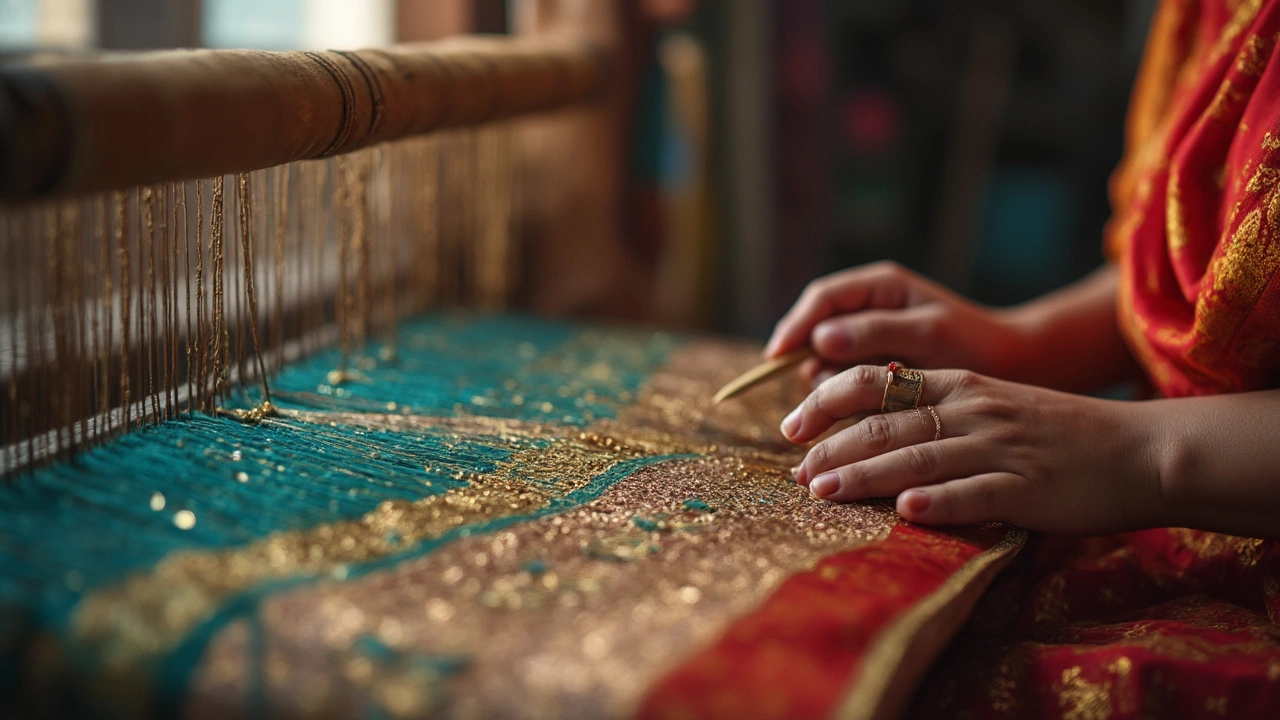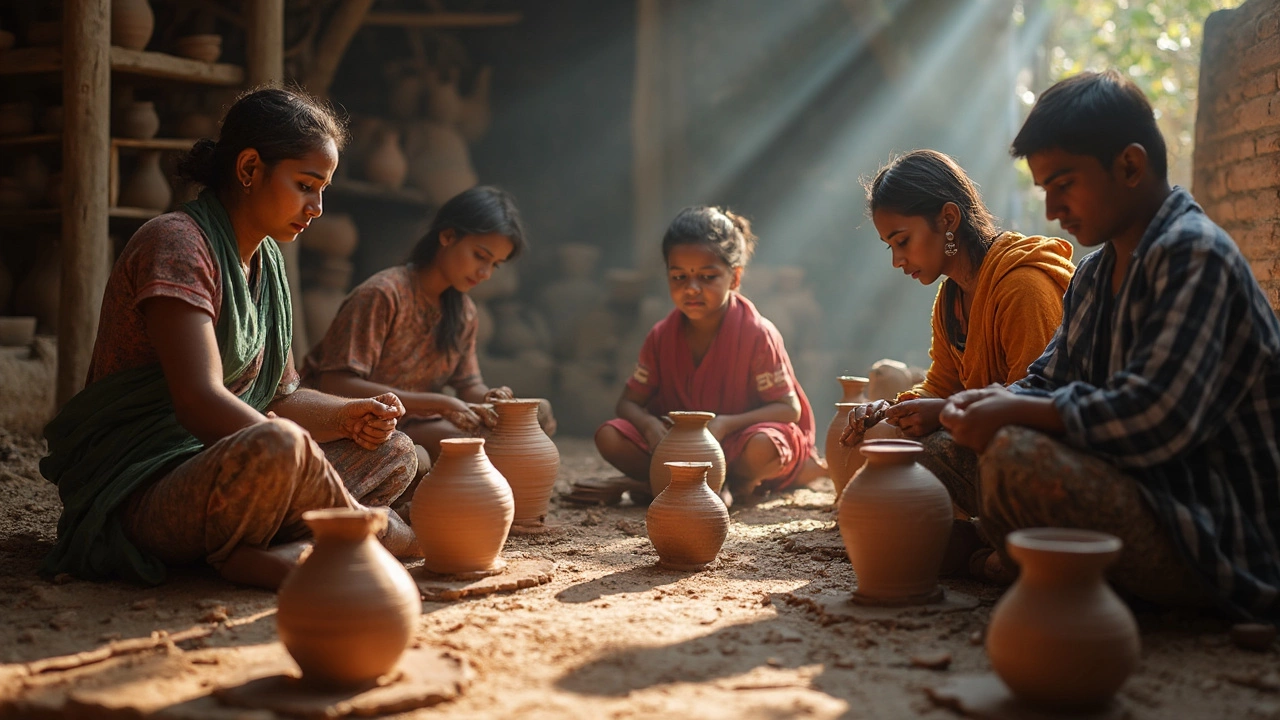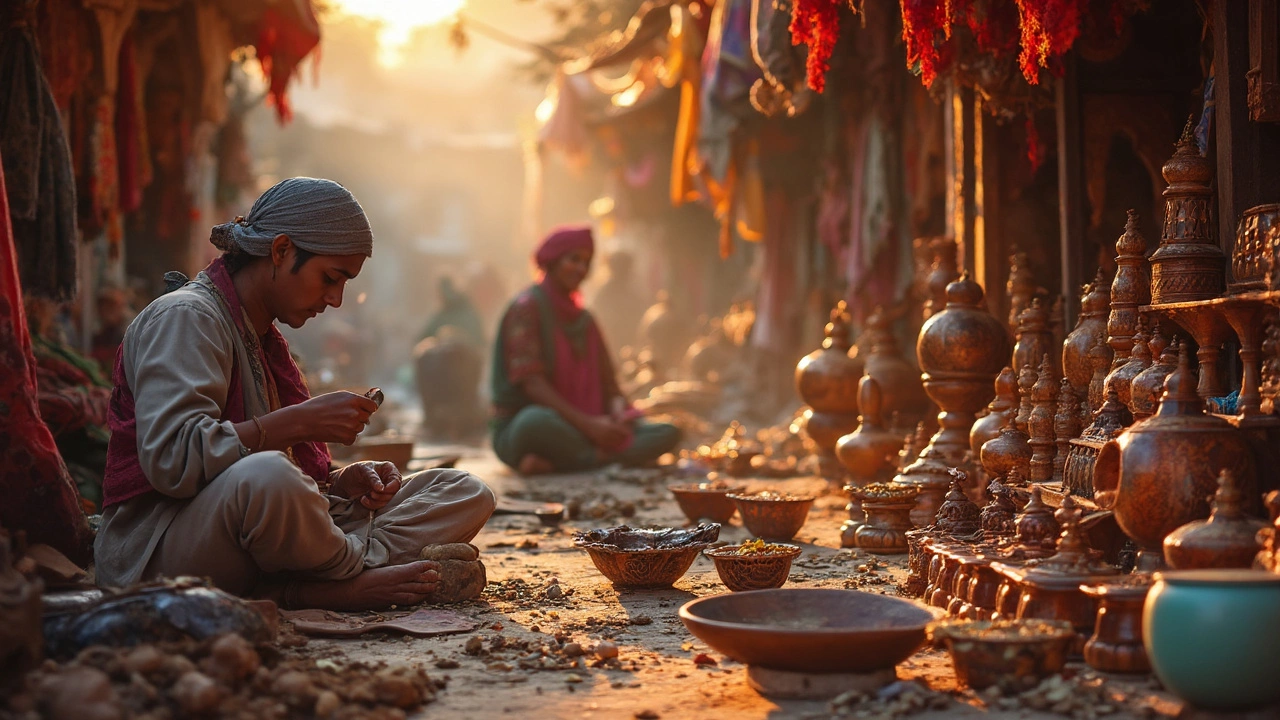When you think of India, vibrant colors, rich cultures, and diverse traditions probably come to mind. Now, picture all of that artistry and heritage wrapped up in a single craft that stands as a beacon of India's identity. You got it—it's about India's one-of-a-kind handicraft. But why does this particular craft outshine the others? Let's dig into the history and beauty that make it so special.
Indian handicrafts have roots going back thousands of years, each craft shaped by its own story and regional touch. These crafts are not just about aesthetics; they're narratives of ancient techniques, materials, and a collective memory passed down over the ages. Among the countless crafts flourishing across the country, there’s one that brilliantly encapsulates the spirit of India’s diversity and creativity. Intrigued? Stay with me as we journey through the intricacies of this handmade masterpiece.
- Origins of Indian Handicrafts
- The Artistry of the Chosen Craft
- Cultural Significance
- Challenges and Preservation Efforts
- Tips on Appreciating and Buying Indian Handicrafts
Origins of Indian Handicrafts
The story of Indian handicrafts is as old as civilization itself. While some crafts have traces leading back to ancient times, they've all played a key role in shaping what we know as India's artistic identity today. The earliest recorded evidence of handicrafts comes from the Indus Valley Civilization, where people created simple yet intricate pottery and other terracotta items from local materials.
Fast forward a few thousand years and, during the Mauryan period, stone and metal crafts really took off. This was the time when artisans started working with silver, gold, and even ivory, laying the groundwork for the dazzling crafts we see today. Skip ahead to the Mughal era, and you've got a whole new level of artistry: think fine textiles like brocades and the exquisite inlay work on marble, such as the stunning Taj Mahal.
Regional Diversity
India's vast landscape has contributed immensely to the diversity of its handicrafts, with each state boasting its unique art form. For example, Madhubani paintings from Bihar and Pashmina shawls from Kashmir tell stories of local life and culture, showcasing the coherent yet diverse tapestry of Indian arts.
What's fascinating is how these diverse crafts survived and thrived, despite political and social changes. The rural economy has long been sustained by these crafts, reflecting the ingenious resourcefulness of Indian artisans.
| Artisan Hub | Notable Craft |
|---|---|
| Rajasthan | Block Printing |
| Gujarat | Embroidery |
| Karnataka | Sandalwood Carving |
These crafts are more than just artistic expressions; they represent a continuum of knowledge passed down through generations. The preservation of these crafts often depends on familial lines, with many artisans learning their craft as children from their parents or grandparents.
Understanding where these crafts originate from and how they've adapted over centuries gives us a richer appreciation of these handmade marvels. They remind us of the incredible journey of human creativity and the relentless spirit that has defined Indian culture.
The Artistry of the Chosen Craft
India’s handicrafts scene features an array of treasures, but the artistry behind each piece is something to behold. Take, for example, the intricate paintings found on Madhubani art, famous for their vibrant colors and eye-catching designs. These paintings aren't just a visual treat; they represent deep-rooted stories and myths from Indian culture, often drawing inspiration from nature, deities, and everyday life.
Techniques That Stand the Test of Time
Madhubani art, originating from the Mithila region of Bihar, is traditionally done with fingers, twigs, brushes, nib-pens, and matchsticks. Natural dyes and pigments dominate the color palette, maintaining an environmentally friendly approach. This technique requires patience and precision, and it’s usually passed down from one generation to the next.
But don’t just take my word for it. As Shobha Bhatia, an esteemed art historian, once said,
Madhubani art is not just about aesthetics; it’s a language through which generations communicate cultural stories.This quote nicely highlights the value these crafts hold beyond their physical beauty.
Symbols and Significance
In Madhubani art, you’ll often spot motifs like sun, moon, and peacocks, which hold auspicious meanings. There’s a reason why this craft is cherished for wedding rituals and festivals—it celebrates life and harmony. The detailed patterns not only display artistic skill but also convey messages of positivity and well-being.
Creating an Identity
It’s not just what’s on the canvas that counts; the process of creating each piece is profound. Artists often spend weeks on a single work, embedding it with their personal touch and regional influences. Such dedication ensures that Madhubani art isn’t just a craft but a unique identity of India.
The combination of traditional techniques, cultural storytelling, and personal expression makes Madhubani art a beacon within India's rich tapestry of Indian crafts. It's a testament to the unmatched creativity and skill found in the Mithila region.

Cultural Significance
When it comes to the handicrafts of India, they’re more than just beautiful objects. They tell stories of the past, capture the essence of India’s vibrant traditions, and reflect the social fabric of where and how they were created. Imagine a piece of art that’s been molded by countless hands over the centuries, each adding their unique touch but all preserving a collective history.
Take, for instance, indigenous crafts like Rajasthan's block printing or Madhubani paintings from Bihar. These works aren't just about appealing designs; they're cultural markers. They're pivotal in festivals and rituals, gifting moments, and even in local economies. These handicrafts are woven into the daily lives of so many, forming a lifeline for entire communities.
Passing Down Tradition
These crafts carry with them the traditions and techniques that have been meticulously handed down from generation to generation. Each piece is like a thread in the rich tapestry of India’s heritage. Families teach these crafts to their children, ensuring not only the survival of their craft but the ongoing story of their community.
Crafts and Festivals
Interestingly, many of these handicrafts are deeply connected to Indian festivals. Ever noticed those intricate diyas during Diwali or the traditionally sewn garments during Garba? They're not mere decoration. They're an intrinsic part of the celebration and bring out the season's spirit. These art forms make festivals even more vibrant and continue to expand their cultural impact.
The significance of Indian crafts extends beyond aesthetics. They play a vital role in sustaining cultural identity, promoting traditional skills, and supporting ethical trade practices. They are indeed a bridge between India's rich history and its dynamic future, showing the world that creating something with your hands also crafts a nation's identity.
Challenges and Preservation Efforts
Indian handicrafts face a bunch of challenges today, with preservation being a key concern. The art form that embodies India's unique identity is slowly losing its sparkle amidst modern changes. But why is this happening?
Decline in Artisan Numbers
With changing times, there's a dip in the number of artisans. Younger generations often wish to pursue more lucrative and modern careers, which leads to a gap in passing down skills. This talent crunch is a major hiccup in keeping these traditional crafts alive.
Global Competition
The Indian crafts industry also battles it out with mass-produced goods made overseas. These items, often cheaper due to low production costs, overshadow the intricacy of handmade crafts. It's a tough market to break into and thrive.
Preservation Efforts
Several strategies are underway to preserve these crafts. Governments and local organizations step in with initiatives aimed at safeguarding these traditions. For instance, specific regions receive funding and support to train young artisans, combining traditional techniques with modern aesthetics.
- Workshops: Hands-on sessions are often held to teach age-old techniques to fresher audiences, ensuring crafts don't perish with the older generations.
- Exhibitions: By showcasing the artistry, both nationally and internationally, awareness and appreciation grow, helping sustain these crafts.
- e-Commerce: Going digital is a game-changer. Many artisans now sell handicrafts online, reaching a global customer base and earning fair wages for their work.
Keep this in mind: every time you choose a handmade piece over a machine-made one, you support not just an artisan, but a whole heritage that defines a part of India's rich tapestry.

Tips on Appreciating and Buying Indian Handicrafts
Buying handicrafts from India is like bringing a piece of its rich culture into your home. But how do you go about choosing something authentic and meaningful? Let's break it down.
1. Understand the Craft
Before buying, take a moment to understand the craft. For instance, learn about the different types of regional crafts like Madhubani paintings or Kutch embroidery. Each has a unique story and technique that adds value.
2. Shop at Authentic Places
Finding the right place to buy is crucial. Look for government-run emporiums or trusted artisan cooperatives that ensure fair prices and genuine articles. They're often a treasure trove of real wonders.
"The soul of India lives in its handicrafts. They tell stories of sustainability, love for nature, and skilled artistry." — Ministry of Textiles, India
3. Fair Pricing
Don’t be shy to ask about pricing and inquire if the artisans are being compensated fairly. Remember, a higher price often reflects the time and skill invested.
4. Look for Certifications
Check for certification labels like 'Craftmark' or 'GI tags' indicating authenticity. These labels guarantee that you're looking at genuine, ethically-made items.
5. Immerse Yourself in the Story
Every piece has a story, and knowing it can change how much you value it. Ask sellers for the background, techniques, and significance of the craft. The more you learn, the more you connect with the item.
6. Care and Maintenance
Once you’ve purchased these beautiful handicrafts, it’s important to care for them. Keep them away from direct sunlight and moisture and handle them with care to preserve them for years to come.
Remember, buying Indian handicrafts is not just about owning decorative pieces. It's about supporting artisans, preserving cultural heritage, and bringing authentic stories into your home.
